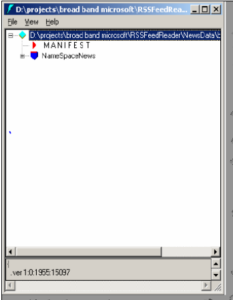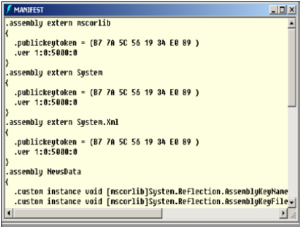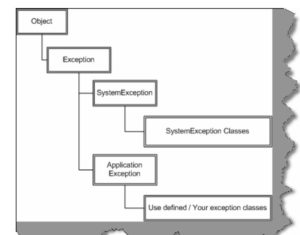Basic DOT NET Framework Interview Questions Answers
What is an IL?
Twist: – What is MSIL or CIL, What is JIT?
(IL)Intermediate Language is also known as MSIL (Microsoft Intermediate Language) or CIL (Common Intermediate Language). All .NET source code is compiled to IL. IL is then converted to machine code at the point where the software is installed, or at run-time by a Just-In-Time (JIT) compiler.
What is a CLR?
Full form of CLR is Common Language Runtime and it forms the heart of the .NET framework. All Languages have runtime and it is the responsibility of the runtime to take care of the code execution of the program. For example, VC++ has MSCRT40.DLL, VB6 has MSVBVM60.DLL, and Java has Java Virtual Machine etc. Similarly, .NET has CLR. Following are the responsibilities of CLR
- Garbage Collection: – CLR automatically manages memory thus eliminating memory leaks. When objects are not referred, GC automatically releases those memories thus providing efficient memory management.
- Code Access Security: – CAS grants rights to program depending on the security configuration of the machine. Example the program has rights to edit or create a new file but the security configuration of machine does not allow the program to delete a file. CAS will take care that the code runs under the environment of machines security configuration.
- Code Verification: – This ensures proper code execution and type safety while the code runs. It prevents the source code to perform illegal operation such as accessing invalid memory locations etc.
- IL (Intermediate language)-to-native translators and optimizer’s:– CLR uses JIT, compiles the IL code to machine code, and then executes. CLR also determines depending on platform what is optimized way of running the IL code.
What is CTS?
In order that two language communicate smoothly CLR has CTS (Common Type System).Example in VB you have “Integer” and in C++ you have “long” these datatypes are not compatible so the interfacing between them is very complicated. In order that these two different languages communicate Microsoft introduced Common Type System. So “Integer” data type in VB6 and “int” data type in C++ will convert it to System.int32, which is data type of CTS. CLS, which is covered in the coming question, is subset of CTS.
What is a CLS (Common Language Specification)?
This is a subset of the CTS, which all .NET languages are expected to support. It was always a dream of Microsoft to unite all different languages in to one umbrella and CLS is one-step towards that. Microsoft has defined CLS, which are nothing but guidelines, that language should follow so that it can communicate with other .NET languages in a seamless manner.
What is a Managed Code?
Managed code runs inside the environment of CLR i.e. .NET runtime. In short, all IL are managed code. However, if you are using some third party software example VB6 or VC++ component they are unmanaged code, as .NET runtime (CLR) does not have control over the source code execution of these languages.
What is a Assembly?
- Assembly is unit of deployment like EXE or a DLL.
- An assembly consists of one or more files (dlls, exe’s, html files etc.), and represents a group of resources, type definitions, and implementations of those types. An assembly may also contain references to other assemblies. These resources, types and references are described in a block of data called a manifest. The manifest is part of the assembly, thus making the assembly self-describing.
- An assembly is completely self-describing. An assembly contains metadata information, which is used by the CLR for everything from type checking an security to actually invoking the components methods. As all information is in the assembly itself, it is independent of registry. This is the basic advantage as compared to COM where the version was stored in registry.
- Multiple versions can be deployed side by side in different folders. These different versions can execute at the same time without interfering with each other. Assemblies can be private or shared. For private assembly deployment, the assembly is copied to the same directory as the client program that references it. No registration is needed, and no fancy installation program is required. When the component is removed, no registry cleanup is needed, and no uninstall program is required. Just delete it from the hard drive.
- In shared assembly deployment, an assembly is installed in the Global Assembly Cache (or GAC). The GAC contains shared assemblies that are globally accessible to all .NET applications on the machine.
What are the different types of Assembly?
There are two types of assembly Private and Public assembly. A private assembly is normally used by a single application, and is stored in the application’s directory, or a sub-directory beneath. A shared assembly is normally stored in the global assembly cache, which is a repository of assemblies maintained by the .NET runtime. Shared assemblies are usually libraries of code, which many applications will find useful, e.g. Crystal report classes that will be used by all application for Reports.
What is NameSpace?
Namespace has two basic functionality:-
- NameSpace Logically group types, example System.Web.UI logically groups UI related features.
- In Object Oriented world, many times it is possible that programmers will use the same class name. Qualifying NameSpace with class name can avoid this collision.
What is Difference between NameSpace and Assembly?
Following are the differences between namespace and assembly:
- Assembly is physical grouping of logical units, Namespace, logically groups classes.
- Namespace can span multiple assembly.
If you want to view an Assembly how do you go about it?
Twist: What is ILDASM?
When it comes to understanding of internals, nothing can beat ILDASM. ILDASM converts the whole ‘exe’ or ‘dll’ in to IL code. To run ILDASM you have to go to ‘C:\Program Files\Microsoft Visual Studio .NET 2003\SDK\v1.1\Bin’. Note that we had v1.1 you have to probably change it depending on the type of framework version you have. If you run IDASM.EXE from the path you will be popped with the IDASM exe program as shown in figure ILDASM. Click on file and browse to the respective directory for the DLL whose assembly you want to view. After you select the DLL you will be popped with a tree view details of the DLL as shown in figure ILDASM. On double clicking on manifest, you will be able to view details of assembly, internal IL code etc as shown in Figure ‘Manifest View’.
You can expand the tree for detail information regarding the DLL like methods, properties, functions etc.
What is Manifest?
Assembly metadata is stored in Manifest. Manifest contains all the metadata needed to do the following things (See Figure Manifest View for more details):
• Version of assembly.
• Security identity.
• Scope of the assembly.
• Resolve references to resources and classes.
The assembly manifest can be stored in a PE file either (an .exe or) .dll with Microsoft intermediate language (MSIL code with Microsoft intermediate language (MSIL) code or in a stand-alone PE file, that contains only assembly manifest information.
Where is version information stored of an assembly?
Version information is stored in assembly inside the manifest.
Is versioning applicable to private assemblies?
Versioning concept is only applicable to global assembly cache (GAC) as private assembly lie in their individual folders. This does not mean versioning is not needed , you can still version it to have better version control on the project.
What is GAC?
Twist: In what situations will you register .NET assembly in GAC?
GAC (Global Assembly Cache) is where all shared .NET assembly reside. GAC is used in the following situations:-
• If the application has to be shared among several application.
• If the assembly has some special security, requirements like only administrators can remove the assembly. If the assembly is private then a simple delete of assembly the assembly file will remove the assembly.
How to add and remove an assembly from GAC?
There are two ways to install .NET assembly in GAC:-
• Using Microsoft Installer Package. You can get download of installer from http://www.microsoft.com.
• Using Gacutil. Go to “Visual Studio Command Prompt” and type “gacutil –i(assembly name)”, where (assembly name) is the DLL name of the project.
what is the concept of strong names?
Twist: – How do we generate strong names?
Twist: – What is use the of SN.EXE?
Twist: – How do we apply strong names to assembly?
Twist: – How do you sign an assembly?
Strong name is similar to GUID (It is supposed to be unique in space and time) in COM components. Strong Name is only needed when we need to deploy assembly in GAC. Strong Names helps GAC to differentiate between two versions. Strong names use public key cryptography (PKC) to ensure that no one can spoof it.PKC use public key and private key concept.
What is garbage collection?
Garbage collection is a CLR feature, which automatically manages memory. Programmers forget to release the objects while coding … Laziness (Remember in VB6 where one of the good practices is to set object to nothing). CLR automatically releases objects when they are no longer in use and refernced. CLR runs on non-deterministic to see the unused objects and cleans them. One side effect of this non-deterministic feature is that we cannot assume an object is destroyed when it goes out of the scope of a function. We should avoid using destructors because before GC destroys the object it first executes destructor in that case it will have to wait for code to release the unmanaged resource. This results in additional delays in GC. So it is recommended to implement IDisposable interface, write cleanup code in Dispose method, and call GC.SuppressFinalize method. Its like instructing GC not to call your constructor.
Can we force garbage collector to run?
System.GC.Collect () forces garbage collector to run. This is not recommended but can be used if situations arise.
What is Delay signing?
During development process you will need strong name keys to be exposed to developer which is not a good practice from security aspect point of view.In such situations you can assign the key later on and during development you an use delay signing. Following is process to delay sign an assembly:
• First obtain your string name keys using SN.EXE.
• Annotate the source code for the assembly with two custom attributes from System.Reflection: AssemblyKeyFileAttribute, which passes the name of the file containing the public key as a parameter to its constructor. AssemblyDelaySignAttribute, which indicates that delay signing, is being used by passing true as a parameter to its constructor.
- The compiler inserts the public key into the assembly manifest and reserves space in the PE file for the full strong name signature. The real public key must be stored while the assembly is built so that other assemblies that reference this assembly can obtain the key to store in their own assembly reference.
Because the assembly does not have a valid strong name signature, the verification of that signature must be turned off. You can do this by using the –Vr option with the Strong Name tool. The following example turns off verification for an assembly called myAssembly.dll.
Sn –Vr myAssembly.dll - Just before shipping, you submit the assembly to your organization signing authority for the actual strong name signing using the –R option with the Strong Name tool. The following example signs an assembly called myAssembly.dll with a strong name using the sgKey.snk key pair.
Sn -R myAssembly.dll sgKey.snk
What is garbage collection?
Garbage collection is a CLR feature, which automatically manages memory. Programmers forget to release the objects while coding. Laziness (Remember in VB where one of the good practices is to set object to nothing). CLR automatically releases objects when they are no longer in use and refernced. CLR runs on non-deterministic to see the unused objects and cleans them. One side effect of this non-deterministic feature is that we cannot assume an object is destroyed when it goes out of the scope of a function. We should avoid using destructors because before GC
destroys the object it first executes destructor in that case it will have to wait for code to release the unmanaged resource. This results in additional delays in GC. So it is recommended to implement IDisposable interface, write cleanup code in Dispose method, and call GC.SuppressFinalize method.
What are different types of JIT?
JIT compiler is a part of the runtime execution environment. In Microsoft .NET there are three types of JIT compilers:
- Pre-JIT: – Pre-JIT compiles complete source code into native code in a single compilation cycle. This is done at the time of deployment of the application.
- Econo-JIT: – Econo-JIT compiles only those methods that are called at runtime. However, these compiled methods are removed when they are not required.
- Normal-JIT: – Normal-JIT compiles only those methods that are called at runtime. These methods are compiled the first time they are called, and then they are stored in cache. When the same methods are called again, the compiled code from cache is used for execution.
What are Value types and Reference types?
Value types directly contain their data that are either allocated on the stack or allocated in-line in a structure. So value types are actual data. Reference types store a reference to the value’s memory address, and are allocated on the heap. Reference types can be self-describing types, pointer types, or interface types. You can view reference type as pointers to actual data. Variables that are value types each have their own copy of the data, and therefore operations on one variable do not affect other variables. Variables that are reference types can refer to the same object; therefore, operations on one variable can affect the same object referred to by another variable. All types derive from the System. Object base type.
What is concept of Boxing and Unboxing ?
Boxing and unboxing act like bridges between value type and reference types. When we convert value type to a reference type it’s termed as boxing. Unboxing is just vice-versa. When an object box is cast back to its original value type, the value is copied out of the box and into the appropriate storage location. Below is sample code of boxing and unboxing where integer data type are converted in to object and then vice versa.
int i = 1;
object obj = i; // boxing
int j = (int) obj; // unboxing
what is the difference between System exceptions and Application exceptions?
All exception derives from Exception Base class. Exceptions can be generated programmatically or can be generated by system. Application Exception serves as the base class for all applicationspecific exception classes. It derives from Exception but does not provide any extended functionality. You should derive your custom application exceptions from Application Exception. Application exception is used when we want to define user-defined exception, while system exception is all that is defined by .NET.


